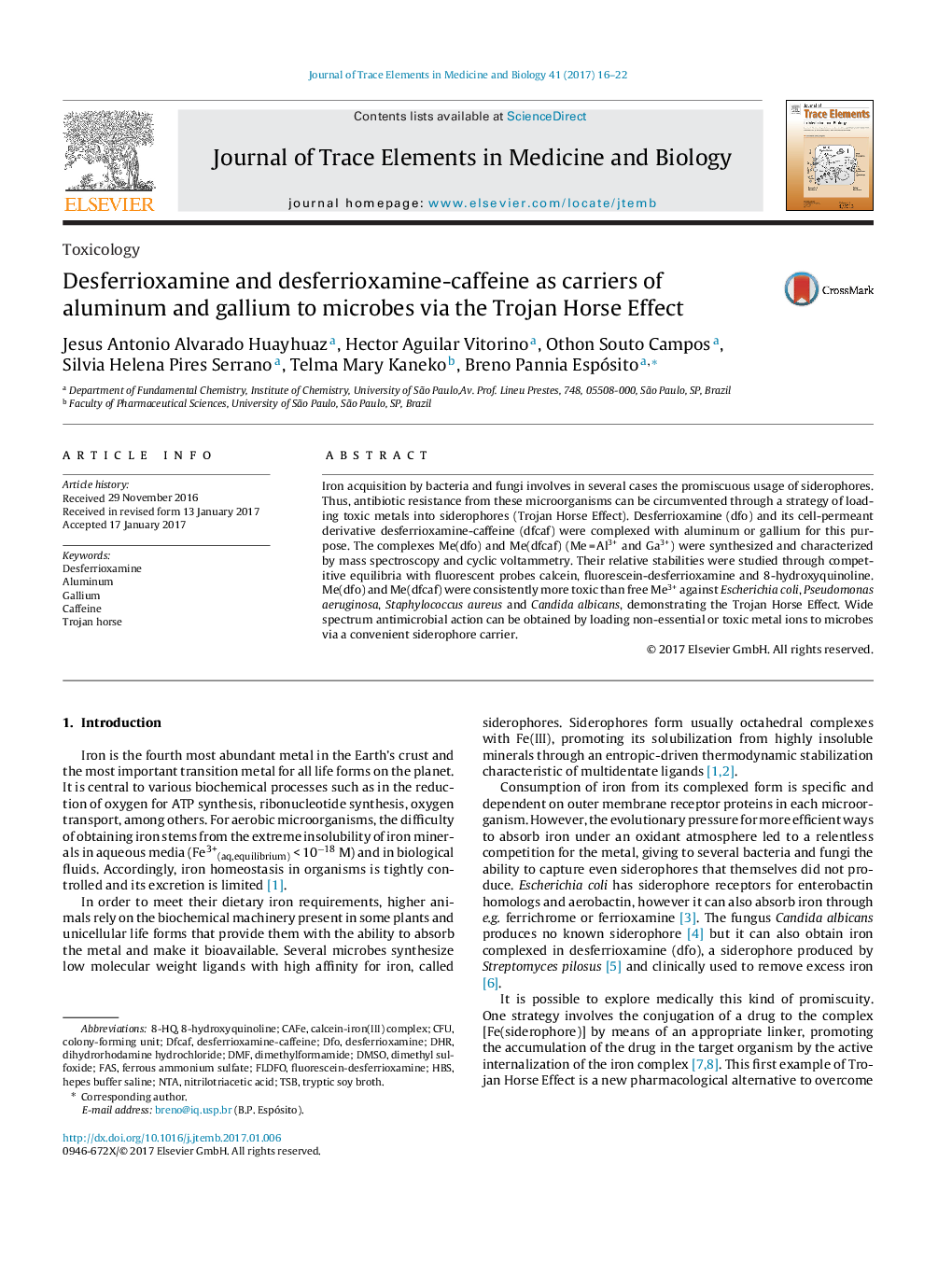| Article ID | Journal | Published Year | Pages | File Type |
|---|---|---|---|---|
| 5138792 | Journal of Trace Elements in Medicine and Biology | 2017 | 7 Pages |
Abstract
Iron acquisition by bacteria and fungi involves in several cases the promiscuous usage of siderophores. Thus, antibiotic resistance from these microorganisms can be circumvented through a strategy of loading toxic metals into siderophores (Trojan Horse Effect). Desferrioxamine (dfo) and its cell-permeant derivative desferrioxamine-caffeine (dfcaf) were complexed with aluminum or gallium for this purpose. The complexes Me(dfo) and Me(dfcaf) (Me = Al3+ and Ga3+) were synthesized and characterized by mass spectroscopy and cyclic voltammetry. Their relative stabilities were studied through competitive equilibria with fluorescent probes calcein, fluorescein-desferrioxamine and 8-hydroxyquinoline. Me(dfo) and Me(dfcaf) were consistently more toxic than free Me3+ against Escherichia coli, Pseudomonas aeruginosa, Staphylococcus aureus and Candida albicans, demonstrating the Trojan Horse Effect. Wide spectrum antimicrobial action can be obtained by loading non-essential or toxic metal ions to microbes via a convenient siderophore carrier.
Keywords
Related Topics
Physical Sciences and Engineering
Chemistry
Analytical Chemistry
Authors
Jesus Antonio Alvarado Huayhuaz, Hector Aguilar Vitorino, Othon Souto Campos, Silvia Helena Pires Serrano, Telma Mary Kaneko, Breno Pannia Espósito,
